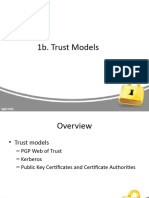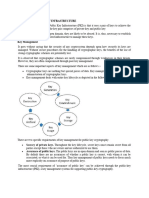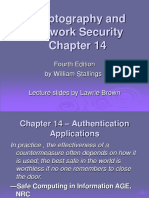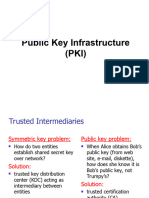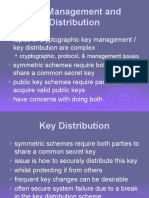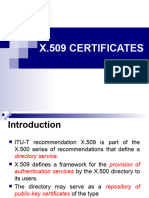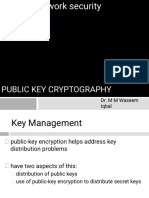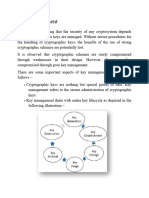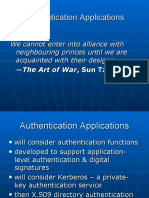0% found this document useful (0 votes)
154 views14 pagesCryptography 08
The document discusses protocols for public key management. It describes two main problems: distributing public keys and distributing secret keys. It then examines two solutions - using a public key authority and using a certificate authority. The certificate authority model is preferred, where a trusted third party certifies and binds users' public keys to their identities. The document also discusses the X.509 standard for certificate formatting and public key infrastructures with hierarchies of certificate authorities.
Uploaded by
api-3774860Copyright
© Attribution Non-Commercial (BY-NC)
We take content rights seriously. If you suspect this is your content, claim it here.
Available Formats
Download as PDF, TXT or read online on Scribd
0% found this document useful (0 votes)
154 views14 pagesCryptography 08
The document discusses protocols for public key management. It describes two main problems: distributing public keys and distributing secret keys. It then examines two solutions - using a public key authority and using a certificate authority. The certificate authority model is preferred, where a trusted third party certifies and binds users' public keys to their identities. The document also discusses the X.509 standard for certificate formatting and public key infrastructures with hierarchies of certificate authorities.
Uploaded by
api-3774860Copyright
© Attribution Non-Commercial (BY-NC)
We take content rights seriously. If you suspect this is your content, claim it here.
Available Formats
Download as PDF, TXT or read online on Scribd
/ 14







